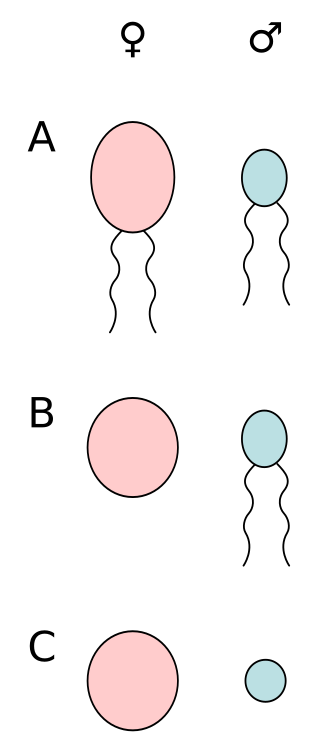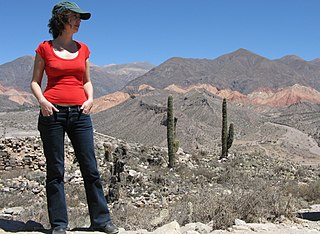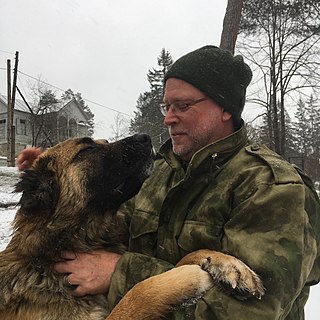
Breadfruit is a species of flowering tree in the mulberry and jackfruit family (Moraceae) believed to be a domesticated descendant of Artocarpus camansi originating in New Guinea, the Maluku Islands, and the Philippines. It was initially spread to Oceania via the Austronesian expansion. It was further spread to other tropical regions of the world during the Colonial Era. British and French navigators introduced a few Polynesian seedless varieties to Caribbean islands during the late 18th century. Today it is grown in some 90 countries throughout South and Southeast Asia, the Pacific Ocean, the Caribbean, Central America and Africa. Its name is derived from the texture of the moderately ripe fruit when cooked, similar to freshly baked bread and having a potato-like flavor.

Ethnobotany is the study of a region's plants and their practical uses through the traditional knowledge of a local culture and people. An ethnobotanist thus strives to document the local customs involving the practical uses of local flora for many aspects of life, such as plants as medicines, foods, intoxicants and clothing. Richard Evans Schultes, often referred to as the "father of ethnobotany", explained the discipline in this way:
Ethnobotany simply means investigating plants used by primitive societies in various parts of the world.

Pharmacognosy is the study of crude drugs obtained from medicinal plants, animals, fungi, and other natural sources. The American Society of Pharmacognosy defines pharmacognosy as "the study of the physical, chemical, biochemical, and biological properties of drugs, drug substances, or potential drugs or drug substances of natural origin as well as the search for new drugs from natural sources".

Savaiʻi is the largest and highest island both in Samoa and in the Samoan Islands chain. The island is also the sixth largest in Polynesia, behind the three main islands of New Zealand and the Hawaiian Islands of Hawaii and Maui. While it is larger than the second main island, Upolu, it is significantly less populated.

Falealupo is a village in Samoa situated at the west end of Savai'i island 20 miles (32 km) from the International Date Line used until 29 December 2011. The village has two main settlements, Falealupo-Uta, situated inland by the main island highway and Falealupo-Tai, situated by the sea. The road to the coastal settlement is about 9 km, most of it unsealed, from the main highway. The village's population is 545.

Prostratin is a protein kinase C activator found in the bark of the mamala tree of Samoa, Homalanthus nutans (Euphorbiaceae). While prostratin was originally isolated and identified as a new phorbol ester from species of the genus Pimelea (Thymelaceae) in Australia, the antiviral activity of prostratin was discovered during research on the traditional knowledge of Samoan healers in Falealupo village by ethnobotanist Paul Alan Cox and a team at the U.S. National Cancer Institute. Samoan healers use the mamala tree to treat hepatitis. Research indicated that prostratin has potential to be useful in the treatment of HIV as it could flush viral reservoirs in latently infected CD4+ T-cells.

Anisogamy is a form of sexual reproduction that involves the union or fusion of two gametes that differ in size and/or form. The smaller gamete is male, a sperm cell, whereas the larger gamete is female, typically an egg cell. Anisogamy is predominant among multicellular organisms. In both plants and animals gamete size difference is the fundamental difference between females and males.
Ethnomedicine is a study or comparison of the traditional medicine based on bioactive compounds in plants and animals and practiced by various ethnic groups, especially those with little access to western medicines, e.g., indigenous peoples. The word ethnomedicine is sometimes used as a synonym for traditional medicine.

Nafanua was a historical ali'i (chief/queen) and toa (warrior) of Samoa from the Sā Tonumaipe'ā clan, who took four pāpā (district) titles, the leading ali'i titles of Samoa. After her death she became a goddess in Polynesian religion.

Seacology is a nonprofit 501(c)(3) charitable organization headquartered in Berkeley, California, that works to preserve island ecosystems and cultures around the world. Founded in 1991, it began with the work of ethnobotanist Paul Alan Cox, who researched tropical plants and their medicinal value in the village of Falealupo in Samoa during the mid-1980s. When the villagers were pressured into selling logging rights to their rainforest in 1988 to build a new school, Cox and his wife offered to help secure funds for the new school in return for an agreement with the villagers to protect their forest. With the help of his friends and family, Cox secured the funds within six months, later earning him and the village chief, Fuiono Senio, the Goldman Environmental Prize for their efforts. Word spread throughout the islands, and with increasing demand for similar projects, Cox, along with Bill Marré and Ken Murdock, decided to form Seacology and expand their work internationally. For the first few years, the organization operated on a volunteer basis.

β-Methylamino-L-alanine, or BMAA, is a non-proteinogenic amino acid produced by cyanobacteria. BMAA is a neurotoxin. Its potential role in various neurodegenerative disorders is the subject of scientific research.

Charles François Antoine Morren, was a Belgian botanist and horticulturist, and Director of the Jardin botanique de l’Université de Liège.

The Samoan tropical moist forests are a tropical moist broadleaf forest ecoregion in the Samoan Islands of the Pacific Ocean.
Jan Salick is an American botanist who researches the interaction between humans and plants (ethnobotany) and conservation biology. Her specialisms include alpine environments, climate change, indigenous peoples and traditional knowledge. She is a past-president of the Society for Economic Botany and holds their Distinguished Economic Botanist award. She is also Fellow of the American Association for the Advancement of Science and received the Fairchild Medal for Plant Exploration. In 2019 she retired as Senior Curator of Ethnobotany at the Missouri Botanical Garden, and now has emerita status.

Ina Vandebroek is an ethnobotanist working in the areas of floristics, ethnobotany and community health. Since 2005, she has worked at the New York Botanical Garden in the Institute of Economic Botany. She has worked on ethnobotanical projects in North America, the Caribbean, and South America.
Walter John Emil Kress is an American botanist and the vice-president for science at the National Museum of Natural History. He currently holds the appointment (2010) as the Director of the Consortium for Understanding and Sustaining a Biodiverse Planet at the Smithsonian and is the former Executive Director of the Association for Tropical Biology and Conservation.
Wayne Arthur Whistler was an American ethnobotanist, academic and writer. Whistler, an adjunct professor at the University of Hawaii's Department of Botany, was an expert on tropical flora of the Pacific Islands, especially Samoa and Tonga.

Michael Jeffrey Balick is an American ethnobotanist, economic botanist, and pharmacognosist, known as a leading expert on medicinal and toxic plants, biocultural conservation and the plant family Arecaceae (palms).

Rainer W. Bussmann is a German botanist and vegetation ecologist, specializing in ethnobotany and ethnobiology, wild food plants, wild crop relatives, climate change, gastronomic botany and preservation of traditional knowledge in the Andes, the Caucasus and the Himalayas. He has worked at the University of Bayreuth, University of Hawaii, University of Texas, the Missouri Botanical Garden, Ilia State University and the State Museum of Natural History Karlsruhe; he has founded several international non-governmental organizations, including Nature and Culture International, Saving Knowledge, and Ethnomont.

Ben-Erik van Wyk FAAS is a South African professor of indigenous botany and traditional African medicine at the University of Johannesburg.

















